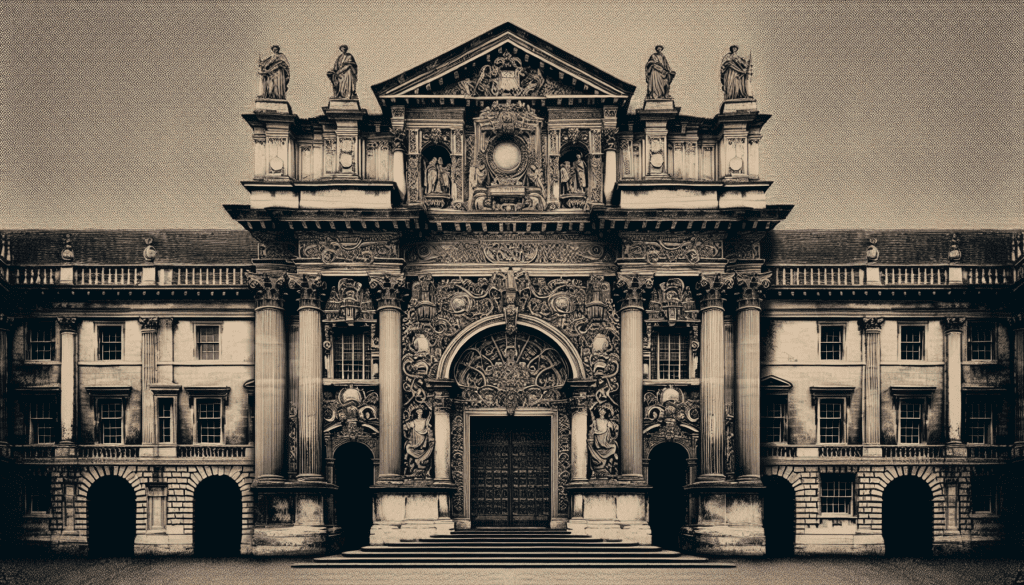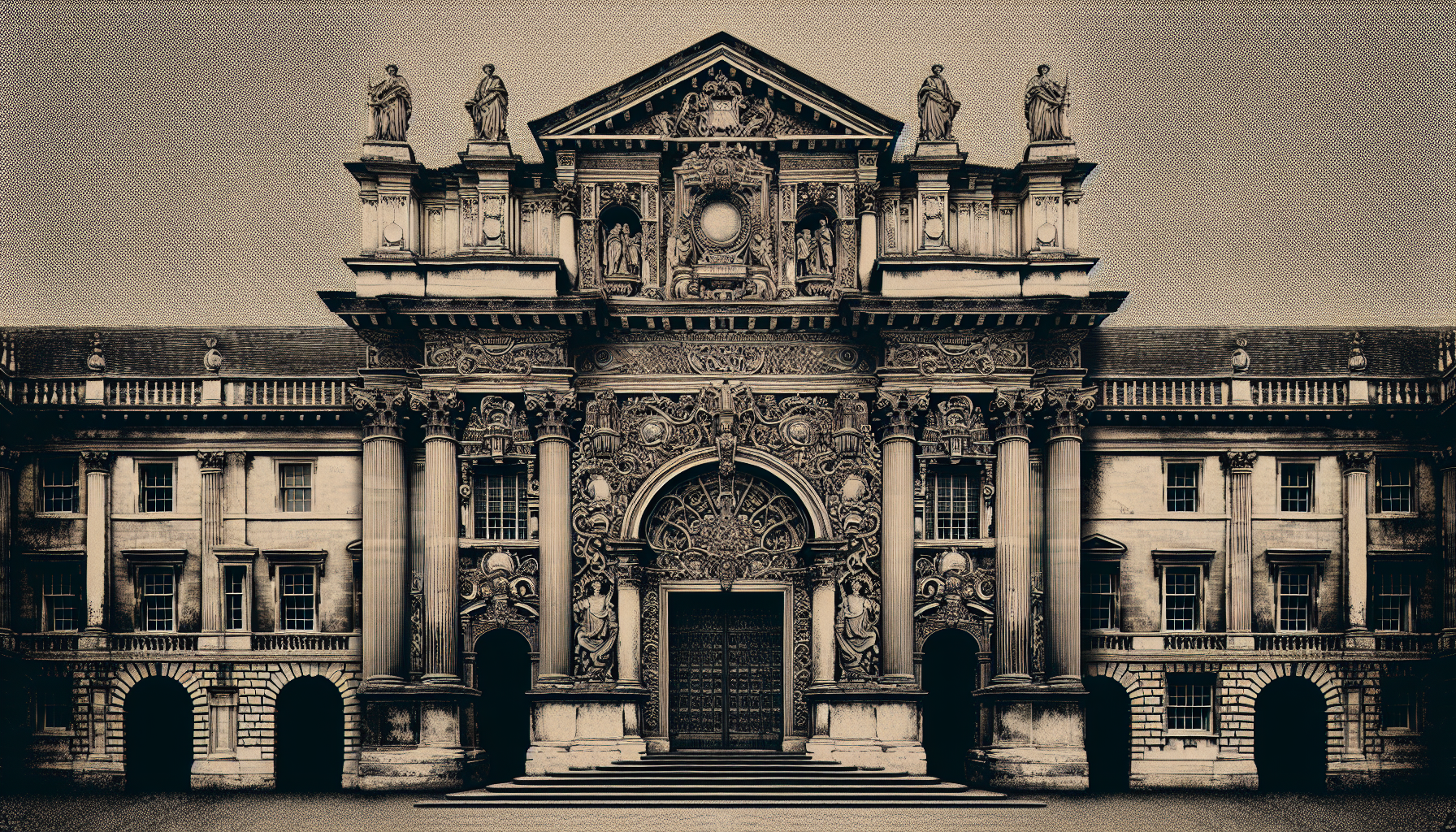Imagine going back in time, to a world where higher education is still a novel concept, where the very idea of a university is nothing more than a spark of imagination. Now, let that spark lead you on a journey of discovery as we explore the question that has fascinated scholars and historians alike for centuries: which university claims the title of being the oldest in the world? From ancient civilizations to medieval Europe, join us as we uncover the origins and unravel the mysteries surrounding the oldest university in existence.
1. University of al-Qarawiyyin
1.1 Founding and Early History
The University of al-Qarawiyyin, located in Fes, Morocco, is widely regarded as the oldest existing degree-granting university in the world. It was founded in 859 CE by Fatima al-Fihri, a wealthy Muslim woman who aimed to establish a center of learning accessible to both men and women. Originally a mosque and madrasa (a religious school), al-Qarawiyyin gradually evolved into a renowned academic institution that fostered intellectual and cultural exchange.
1.2 Noteworthy Alumni and Achievements
Over the centuries, the University of al-Qarawiyyin has produced many influential scholars and intellectuals. Notable alumni include the philosopher Ibn Khaldun, whose works on history and sociology made significant contributions to the understanding of human society. The institution’s curriculum has covered a wide range of subjects, including theology, law, language, literature, mathematics, and astronomy, facilitating the growth of knowledge in various fields.
1.3 Modern Significance and Expansion
In recent years, the University of al-Qarawiyyin has undergone significant renovations to adapt to modern educational standards while preserving its historical and cultural heritage. The library, containing rare manuscripts, has been restored and digitized, making its valuable resources more accessible to the academic community. Additionally, the university has expanded its infrastructure to accommodate a larger student population, reinforcing its role as a leading center for education and research in the Arab world.
2. University of Bologna
2.1 Establishment and Early Development
The University of Bologna, located in Bologna, Italy, holds the distinction of being the oldest continuously operating university in the world. It was established in 1088 CE by a group of scholars who sought autonomy and intellectual freedom. Recognized by Emperor Frederick I, the university was granted various privileges, including the ability to govern itself, set its own curriculum, and award degrees.
2.2 Influence and Innovations
The University of Bologna significantly influenced the development of the modern university system. It introduced the concept of academic degrees, categorizing studies into bachelor’s, master’s, and doctoral levels. This innovative approach established a standardized framework for educational progression and laid the foundation for academic recognition worldwide. Moreover, the university played a crucial role in the evolution of legal studies, with its renowned law school becoming a model for legal education across Europe.
2.3 Legacy and Present-day Relevance
The legacy of the University of Bologna can be observed in its continued commitment to scholarly excellence. With over 33,000 students and numerous research centers, it remains a prestigious institution attracting scholars from around the globe. The university’s emphasis on interdisciplinarity and collaboration has contributed to advancements in various fields, ranging from science and medicine to arts and humanities. Today, the University of Bologna continues to provide a vibrant academic environment and is internationally recognized for its high-quality education.

3. University of Oxford
3.1 Origins and Growth
The University of Oxford, located in Oxford, England, can trace its roots back to the late 11th century. Although the precise founding date is unknown, evidence suggests that teaching existed before 1096 CE. Initially, scholars gathered to give or receive instruction in various disciplines, gradually forming a structured educational institution. The university’s growth was further propelled by the patronage of influential figures, such as King Henry II and others.
3.2 Historical Significance and Contributions
Throughout its history, the University of Oxford has played a pivotal role in shaping the intellectual landscape of Europe and beyond. It became a center of religious and philosophical debates during the Middle Ages, and its scholars made significant contributions to various fields, including theology, natural sciences, mathematics, and literature. Notable figures associated with Oxford include philosophers Thomas Hobbes and John Locke, playwright Oscar Wilde, and physicist Stephen Hawking.
3.3 Prestige and Academic Excellence
Today, the University of Oxford stands as one of the most prestigious universities globally, consistently ranked among the top institutions for academic excellence. Its unique tutorial system, which emphasizes personalized instruction and critical thinking skills, has fostered the development of numerous influential thinkers and leaders. With its rich history, intellectual vibrancy, and commitment to groundbreaking research, the University of Oxford continues to be at the forefront of global education.
4. University of Salamanca
4.1 Early Days and Foundation
The University of Salamanca, situated in Salamanca, Spain, was founded in 1134 CE, making it one of the oldest universities in Europe. Established as a cathedral school, it gradually evolved into a renowned center for higher education. The university received a royal charter in 1218, solidifying its status as an officially recognized institution dedicated to learning.
4.2 Cultural Impact and Intellectual Vitality
During the Renaissance, the University of Salamanca emerged as a key intellectual hub, attracting scholars from across Europe. Its faculty played a significant role in shaping early scientific thought and contributed to debates on topics ranging from theology and philosophy to ethics and law. Additionally, the university’s library became a treasure trove of scholarly texts, solidifying its reputation as a center of cultural heritage and intellectual vitality.
4.3 Ongoing Excellence and Renowned Alumni
The University of Salamanca continues to be an esteemed institution, renowned for its academic excellence. It offers a wide range of programs across various disciplines while upholding traditional research and educational values. Famous alumni include Spanish literary figures such as Miguel de Unamuno and Francisco de Vitoria, who made lasting contributions to literature and philosophy. The university’s commitment to producing well-rounded, critical thinkers remains central to its continued legacy.

5. Al-Azhar University
5.1 Rich History and Founding
Al-Azhar University, located in Cairo, Egypt, traces its roots back to 970 CE, during the rule of the Fatimid Caliphate. It was founded as a center of Islamic learning with the primary aim of educating scholars in Islamic theology, law, and Arabic literature. The university’s establishment marked a significant moment in history, driving the intellectual and cultural development of the Islamic world.
5.2 Role in Islamic Education and Scholarship
Al-Azhar University has continuously upheld its dedication to Islamic education and scholarship. It remains a global center for religious studies, teaching subjects such as Quranic interpretation, Hadith (sayings of the Prophet Muhammad), and Islamic jurisprudence. Its renowned faculty serves as esteemed scholars and advisors, greatly influencing the religious and intellectual discourse within the Islamic community.
5.3 Expanding Influence and Contemporary Relevance
In recent years, Al-Azhar University has expanded its influence beyond its traditional academic programs. It has embraced technological advancements and established satellite campuses to reach a broader audience. The university actively engages in interfaith dialogues, promoting mutual understanding and countering extremism. With its historical significance, scholarly traditions, and growing international collaborations, Al-Azhar University continues to hold immense contemporary relevance in the realm of Islamic education and intellectual discourse.
6. University of Paris
6.1 Medieval Origins and Renaissance Impact
The University of Paris, often referred to as the Sorbonne, can trace its roots back to the early 12th century. It was established as a center for theological education, emerging from cathedral schools that provided basic instruction. Over time, the university grew to encompass various fields of study, particularly during the Renaissance, when it became a prominent institution for humanistic studies, arts, and sciences.
6.2 Pioneering Role in Academic Fields
The University of Paris played a pioneering role in numerous academic fields, leading to significant advancements in knowledge. Notable areas of influence include theology, philosophy, medicine, and humanities. It became a renowned center for philosophical debates and produced influential thinkers, such as René Descartes and Blaise Pascal. The university’s faculties were at the forefront of scientific inquiry and contributed to breakthroughs in disciplines such as physics, chemistry, and mathematics.
6.3 Contributions to Higher Learning
The University of Paris left an indelible mark on the history of higher learning, establishing academic standards and structures that shaped universities worldwide. It introduced the concept of faculties, organized around specific subject areas, allowing for specialization and deeper exploration of disciplines. Additionally, Paris served as a hub for intellectual exchange, attracting scholars from across Europe and fostering the dissemination of knowledge. To this day, the university’s reputation for academic rigor persists, solidifying its enduring legacy.
7. University of Naples Federico II
7.1 Establishment and Early Achievements
The University of Naples Federico II, founded in 1224, holds the distinction of being the oldest public university in the world. Established by Emperor Frederick II, the university was a significant cultural and educational undertaking. It flourished during the Renaissance, attracting renowned scholars and making notable contributions to various domains of knowledge.
7.2 Renaissance Era and Cultural Flourishing
During the Renaissance, the University of Naples Federico II experienced a period of remarkable intellectual and cultural flourishing. Renowned scholars, including philosophers such as Thomas Aquinas and Giordano Bruno, contributed to the university’s academic prestige. The institution became a center for scientific discoveries, particularly in the fields of anatomy, mathematics, and astronomy. Its library also became a repository of important manuscripts and texts, further enriching the intellectual landscape of the university.
7.3 Continuing Excellence and Global Recognition
Today, the University of Naples Federico II continues to be a prestigious institution known for its commitment to excellence in research and education. It offers a wide array of programs across various disciplines, supporting interdisciplinary collaborations and encouraging innovative research. The university’s alumni network includes numerous Nobel laureates, highlighting its global recognition and influence in driving advancements in science, humanities, and arts.
8. University of Cambridge
8.1 Foundation and Collegiate System
The University of Cambridge, founded in 1209, is one of the oldest universities in the world. It originated from a group of scholars who sought protection from riots in Oxford. Since its early days, Cambridge has embraced a unique collegiate system, where students and academics live and study in small, self-governing communities called colleges. This system fosters close-knit academic communities, encourages intellectual discourse, and provides opportunities for interdisciplinary collaboration.
8.2 Influence on Scientific Breakthroughs
Throughout its history, the University of Cambridge has made significant contributions to scientific breakthroughs. Notable discoveries include the structure of DNA, the development of the laws of motion by Sir Isaac Newton, and groundbreaking advancements in fields such as mathematics, physics, and chemistry. The university’s research environment, combined with world-class faculty and state-of-the-art facilities, has continually propelled the advancement of knowledge and innovation.
8.3 Unwavering Academic Prestige
The University of Cambridge remains a global leader in education, known for its unwavering academic prestige. Its rigorous academic programs attract top-tier students and offer a broad range of disciplines to pursue. Cambridge’s commitment to excellence is reflected in its dedicated faculty, exceptional research output, and numerous Nobel laureates and fields medalists associated with the university. With its rich history, vibrant intellectual community, and commitment to advancing knowledge, Cambridge continues to be at the forefront of global academia.
9. University of Padua
9.1 Birth and Renaissance Dynamics
The University of Padua, founded in 1222, stands as one of Italy’s oldest universities. Established by a group of scholars and teachers, the university quickly gained a reputation for fostering intellectual rigor and innovation. It flourished during the Renaissance, becoming an epicenter of humanistic studies, attracting influential thinkers from across Europe.
9.2 Innovative Teaching Methods and Renowned Alumni
The University of Padua was known for employing innovative teaching methods, such as dissections in anatomy lectures, challenging traditional practices and contributing to advancements in medical education. The university boasted an esteemed faculty, attracting influential alumni like Galileo Galilei and Nicolaus Copernicus. Their discoveries in the fields of astronomy and physics revolutionized scientific thought and placed the university at the forefront of scientific advancements.
9.3 Sustained Excellence and Academic Advancements
The University of Padua continues to thrive as a prestigious institution renowned for its academic excellence. It offers a diverse range of programs across faculties, catering to the ever-evolving needs of students. The university’s research centers and collaborations facilitate groundbreaking discoveries and foster interdisciplinary research. Padua’s commitment to continuing its legacy of innovation and scholarship positions it as a globally recognized institution in the pursuit of knowledge and academic advancements.
10. University of Montpellier
10.1 Early Origins and Medical Emphasis
The University of Montpellier, founded in 1289, has its origins in a school of medicine established by the local medical community. It quickly gained prominence as a leading institution for medical education, attracting students and physicians from far and wide. Montpellier’s medical school became renowned for its emphasis on empiricism and direct observation, fostering advancements in the field of medicine.
10.2 Key Figures and Progressive Research
The University of Montpellier boasts a rich history of progressive research and influential figures. Notable alumni include François Rabelais, a renowned writer and physician, and Nostradamus, known for his prophetic writings. The university’s faculty and students have made significant contributions to different fields of study, including botany, chemistry, and physics. Montpellier’s commitment to research and innovation has fostered a vibrant academic environment, attracting scholars from around the world.
10.3 Contemporary Significance and Global Collaborations
Today, the University of Montpellier continues to be an esteemed institution providing high-quality education and research opportunities. It actively engages in international collaborations, ensuring its students and faculty benefit from diverse perspectives and expertise. The university’s focus on interdisciplinary approaches and close ties with industry partners contributes to practical applications and societal impact. Montpellier’s legacy of academic excellence and its forward-thinking approach affirm its contemporary significance in the global academic landscape.
In conclusion, these ancient universities have left an indelible mark on the history of higher education and continue to shape the intellectual landscape of the world today. From their foundations in the Middle Ages to their ongoing commitment to academic excellence, each institution has upheld a legacy of scholarship, innovation, and cultural development. Whether it be the University of al-Qarawiyyin in Morocco or the University of Montpellier in France, these venerable institutions serve as reminders of the enduring power of knowledge and the transformative influence of education.

